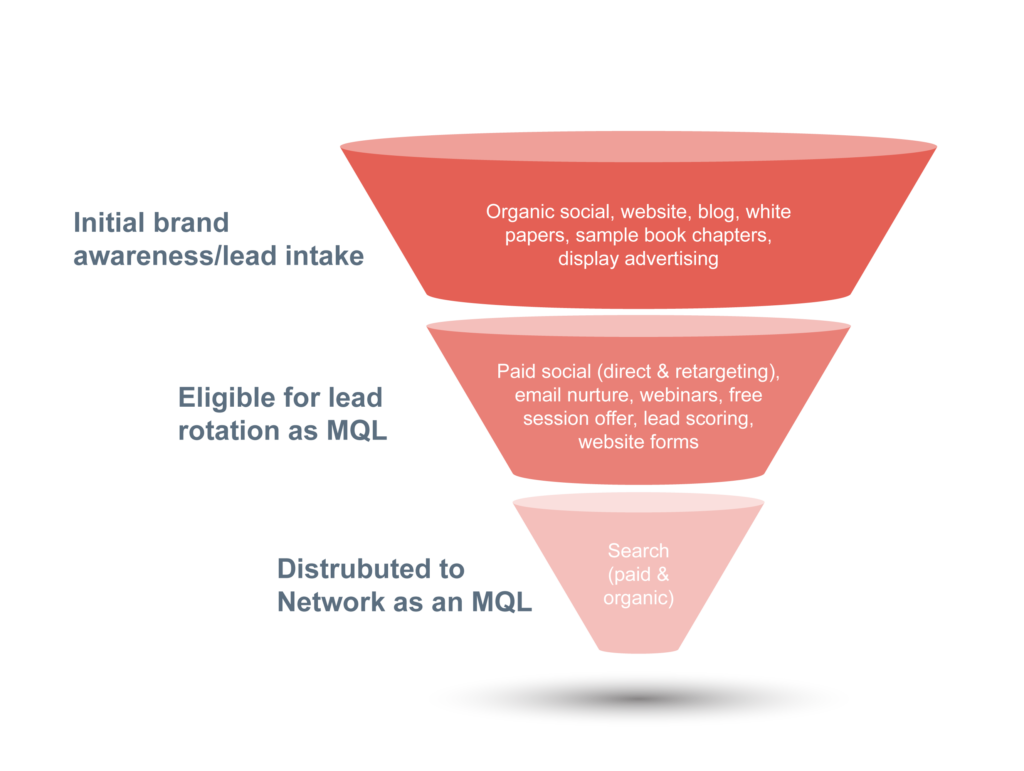In today’s world, sales cycles have become longer, and people are more hesitant to spend money, whether personal or professional. It is important to continue bringing prospects or potential buyers through the marketing funnel – more specifically, a full-funnel marketing approach, which involves nurturing leads through their buyer journey. However, a full-funnel marketing approach is incomplete without a full digital marketing ecosystem.
With the rise of social media and online shopping, companies need to be able to reach their customers where they are spending the majority of their time: on the internet. However, simply having a website or social media page is not enough to effectively compete in the digital space. To truly make an impact, companies must utilize a full digital marketing ecosystem.
So, what is a full digital marketing ecosystem? It’s a comprehensive approach incorporating multiple digital marketing channels and tactics – from SEO to social media (organic and paid) to email – working together to create a cohesive and effective strategy. This approach allows businesses to reach their target audience through various touchpoints, increasing the likelihood of conversions and overall success.
Marketers must identify where the target audience is consuming content and information, prioritize where the brand or client should have a presence, and then create a key message and supporting creative assets/content. It is important to set up campaigns, track them, test them, and optimize them based on what’s working and what’s not. Additionally, nurturing potential and existing leads with retargeting and upsell strategies can be highly beneficial.
Digital Marketing Channels and Tactics
A critical aspect of a full digital marketing ecosystem is search engine optimization (SEO). This involves optimizing your website and its content to improve its visibility and ranking in search engine results pages (SERPs). By utilizing keywords, optimizing page titles and descriptions, and creating high-quality content, businesses can improve their chances of appearing at the top of search results for relevant queries.
Another crucial element is social media marketing. Social media platforms allow businesses to connect with customers in a more personal and engaging way. By creating a solid social media presence, companies can build brand awareness, foster customer loyalty, and drive traffic to their website. Top-performing companies also utilize social media data to inform business decisions. Social media strategy can genuinely support your ENTIRE business.
Email marketing is also a key component of the full digital marketing ecosystem. By collecting email addresses from customers and potential customers, businesses can send targeted and personalized messages that are more likely to result in conversions. Email marketing campaigns can include newsletters, promotional offers, and other relevant content.
Pay-per-click (PPC) advertising is placing ads on search engine results pages or social media platforms and paying only when a user clicks on the ad. PPC advertising allows businesses to reach a targeted audience and track the success of their campaigns through metrics like click-through rates and conversion rates.
Finally, you can round out your digital marketing ecosystem with content marketing. This involves creating high-quality, informative, and engaging content designed to attract and retain a target audience. By creating content like blog posts, videos, and white papers, businesses can establish themselves as thought leaders in their industry and build trust with potential customers.

Prioritizing bottom-of-the-funnel activities, such as paid and organic search, is a good approach for a limited budget. However, when the budget is there, we have seen how a full-funnel marketing approach and consistent digital strategy can drive the most impact.
Utilizing a full digital marketing ecosystem is essential for businesses that want to succeed in the digital space. With the down economy and longer sales cycles, having multiple touchpoints with potential customers is more important than ever. By incorporating multiple channels and tactics, your business can reach your target audience and campaign goals.


